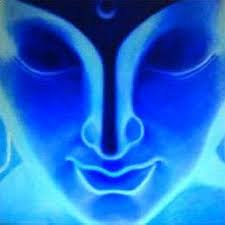FIVE STATES OF MIND DISCUSSED IN YOGA (CHITTA BHUMIS)
These are the five types of mind that are discussed in yoga:
1. Mudda mind – Dull mind
The mind is dull, sleepy, lethargic and lacking vigor. When we are in such a mental state we feel tired and not willing to engage with life. We easily give up and find numerous reasons not to move on with our intentions. If we are denied, or we have to invest more effort into getting the desired object, the dull mind drives us into a state of dissatisfaction. We easily complain and point out towards others.
2. Kshiptha mind – restless, (monkey mind)
In this state, the mind is totally restless, unable to concentrate or decide, jumping from one thought to another, from one emotion to the next and from object to object. It moves between love and hate, likes and dislikes, expectations and disappointment.
This is a common state for most of us today. We alternate between the Kshipta (monkey) and the Mudha (donkey) state. When we wake up we can feel very Mudda, as the day unfolds we can fall into a state of Kshipta easily, or the other way around.
3. Vikshipta mind – occasionally steady mind (butterfly mind)

Temporarily distracted, and temporarily focused 50/50.
Exactly like a butterfly alternating his fly and rest, the mind oscillates between thoughts of clarity and thoughts of confusion.
We commit to work hard towards finding health and balanced life. We are happy, and we tell everyone how much we have changed, and how good we feel about ourselves. It almost feels like we are in the place we always wanted to be, but at the first obstacle/challenge, we fall again into a state of distracted mind. If we experience a painful situation we choose to withdraw and go back into the old habits.
For example, in our yoga practice, while sitting in meditation, we do find ourselves experiencing short periods of calmness, stillness and focus on the object of meditation, but the moment we hear a sound, or a movement our attention sleeps away. We get distracted/irritated and start to blame on the environment “ I was so balanced and the environment interferes with my practice”. That very moment we start to think to change the environment, and not our way of perceiving.
4. Ekagra mind – one-pointed (candle mind), in this state the mind remains focused on one object.

The mind is ready to focus and pay attention, very relaxed but not sleepy. In yoga practice, we can bring the mind into such a state of relaxed attention.
5. Niruddha – fully concentrated mind

In this state, the mind is not distracted by random thoughts but is fully absorbed in the object of concentration. In such a state no new impressions can distract our mind and the old one can no longer influence our present state. The knowledge is available for practicing towards higher mental states.
Most of us, remain in the first three states which only maintain and increase mind fluctuations and the bondage with the external world. Of these five states, only the Ekagra and Niruddha can attain higher states of concentration. The Mudha mind is too dull to make the required effort to “wake up”. The Kshipta mind is too restless and can’t find steadiness, and unsteady mind lucks concentration and balance. The Vikshipta mind is inconsistent – many yoga practitioners or spiritual stickers find themselves in this state. There are moments of clarity, stability, and concentration and yet at times the practitioner gets distracted and pulled back into old habits. Still, this type of mind can attain concentration through determination, discipline and consistent practice.
Warmly,
Maria


